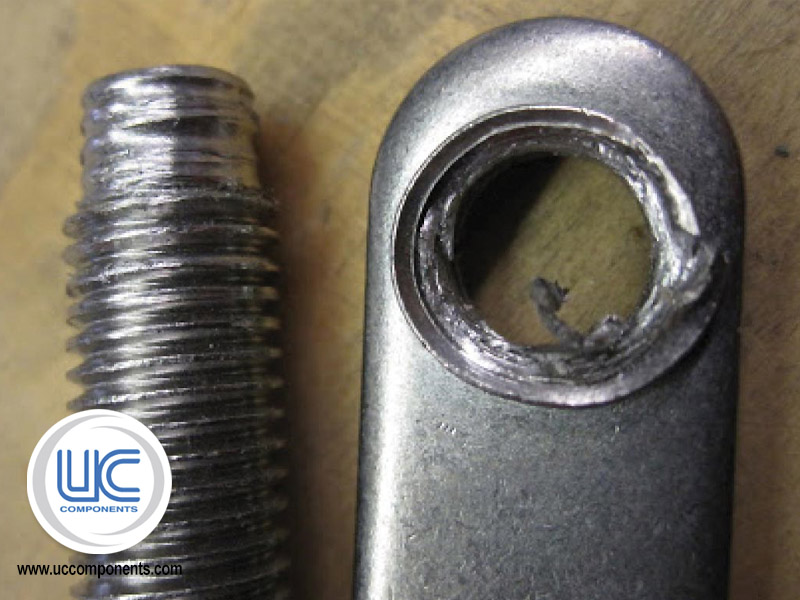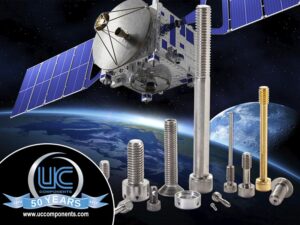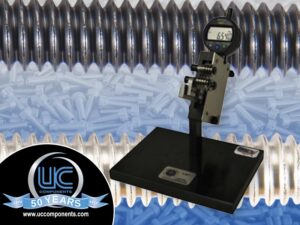Galling is one the most common problems when tightening fasteners. Galled nuts and bolts may even pass all required inspections (mechanical, threads, material, etc.), yet they can still fail to function properly. Galling tends to be more common in alloys that self-generate an oxide surface film for corrosion protection like stainless steel, aluminum, and titanium.
What is Fastener Galling?
Galling, often called cold-welding or cold-fusing, can occur when two fastener surfaces are placed under heavy pressure and lock together.
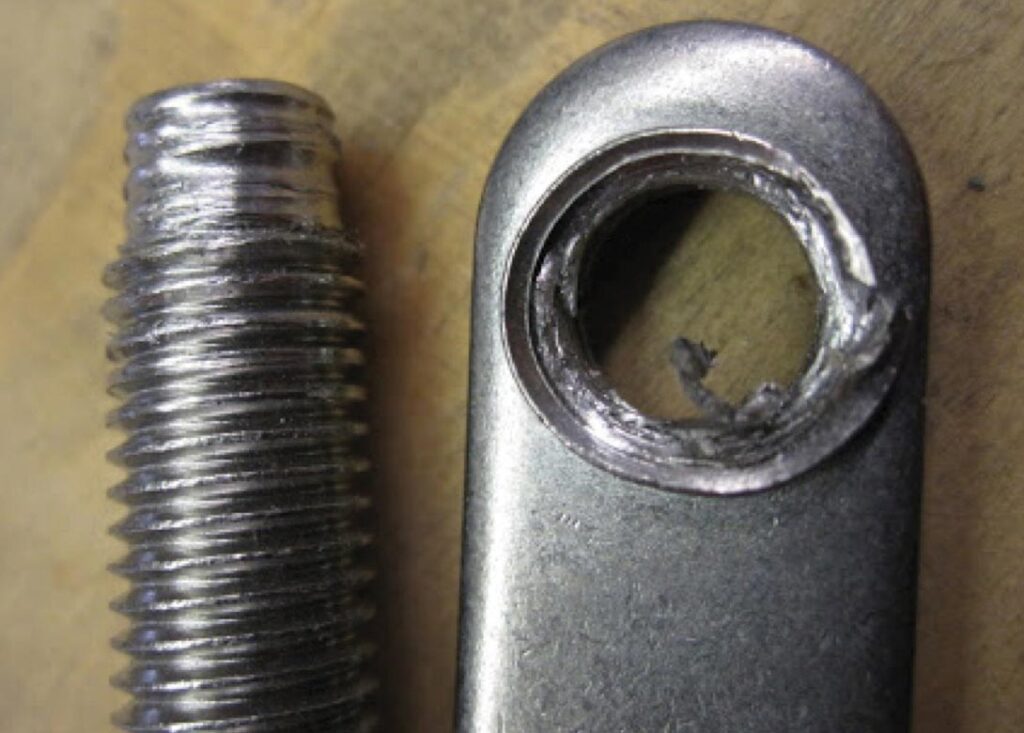
How Does Galling Affect Fasteners?
When two fasteners are tightened together pressure builds between the contact threads and can break the protective oxide coatings. Without the oxide coating, the exposed metal rubs, generates heat, and can fuse together.
With minor galling you may still be able to remove the fastener; however more severe cases will completely fuse the fastener surfaces which will make it almost impossible to remove. Even though galled fasteners will not loosen, the affected joint can still fail from fatigue. As a result, the parts can become stripped, twisted off, or sheared; which affects overall quality, reliability, and durability. It can also increase maintenance and repair costs since the galled fasteners will need to be removed and replaced, and any holes from the damaged fasteners will need to be repaired.
In High Vacuum and Ultra High Vacuum systems, like materials can become cold-fused together due to thermal expansion and the lack of moisture created by the vacuum. Screws threaded into blind tapped holes are commonly affected by galling, and components made of stainless steel are especially susceptible.
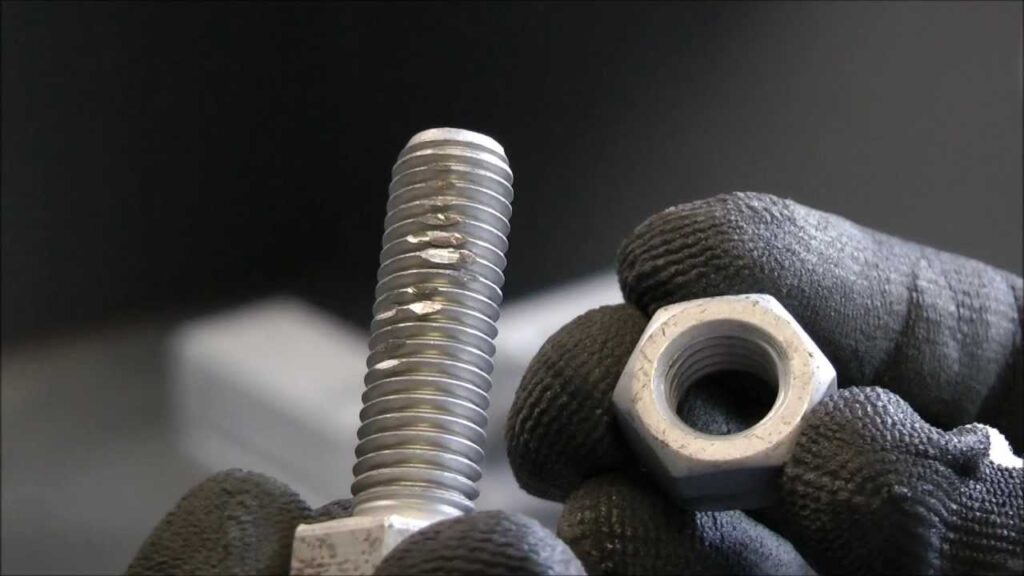
How Can I Avoid Galling?
Unfortunately little is known on how to successfully control all part galling, however it can be minimized.
The best way to avoid galling is to use a lubricant or “anti-seize.” These types of lubricants come in many varieties that are formulated particularly for specific alloys or environments. However, in UHV or other clean applications the use of anti-seize lubricants is not an option because of the possibility of contaminating the interior of the chamber. In instances of this nature another solution must be found.
What are some other ways to minimize galling?
- Use a finish (coating or plating) that is designed to prevent galling.
- Design your parts to use different alloys to lower the possibility of galling.
- Use fasteners with smoother surfaces to reduce friction.
- Use coarse threads (instead of fine threads) with a 2A-2B fit since they have a larger thread allowance and can handle more abuse.
- Slowing the assembly speed of a threaded fastener reduces chances of heat buildup and galling.
- Make sure to use the proper installation torque and never over tighten fasteners.
Balancing the fasteners’ properties to get the best performance while preventing galling is not easy. UC Components offers a range of finishes (coatings and platings) for our RediVac® line of fasteners, washers, and nuts that are uniquely formulated and specifically designed to prevent galling and/or improve the corrosion resistance of the treated component. Without the hassle of galled, stuck fasteners, downtime is minimized.
All our coatings and platings are vacuum compatible, dependant on your specific process chemistry. While the right coating or plating for your HV or UHV application is best defined by your process engineer, please feel free to contact us for more information.
UC Components finishing processes include:
- Precision Cleaning
- Silver Plating
- Gold Plating
- Nickel Plating
- MoS2 Coating
- WS2 Coating
- Electropolishing
- Kolsterising®
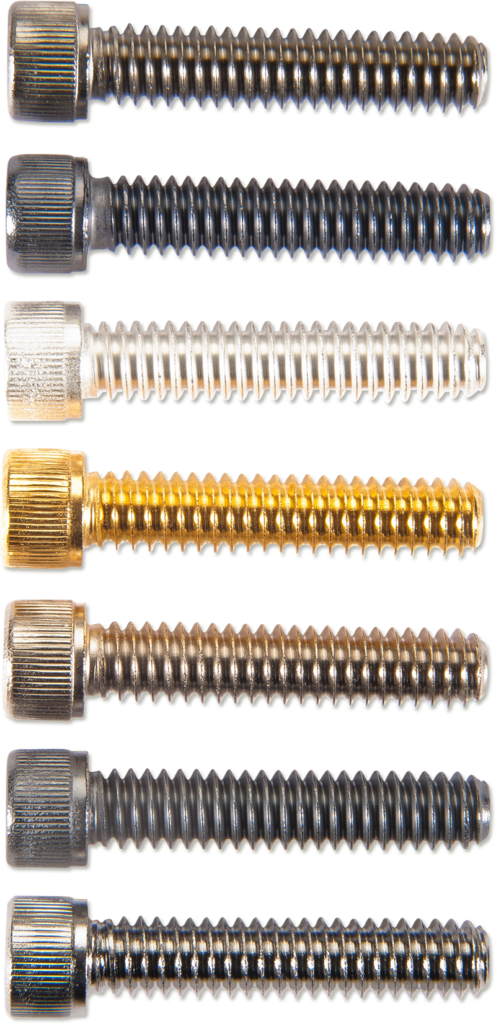
Every RediVac® component, from nickel plated screws to WS2 coated washers to untreated hex nuts, goes through our certified Class 100/ISO Class 5 Cleanroom precision cleaning and packaging processes prior to shipment.
Even the smallest component can ruin the effectiveness of a product or cause significant challenges, which in turn may determine a manufacturer’s success or failure. By partnering with experts like us in engineering and supply, manufacturers not only solve incumbent issues such as galling, but also boost safety, quality, speed to market, and profitability.
UC Components has been the world leader in high vacuum hardware since 1974. Center vented screws are the original product in UC Components’ RediVac® line. Vented screws are the fasteners of choice for high production processes in vacuum. Our vented screws are available in a range of Inch and metric sizes, and with an array of specialty finishes to help prevent galling.
Request a quote on coated, plated, or electropolished RediVac® products like nickel plated screws for your HV or UHV application, or contact UC Components to learn more.

